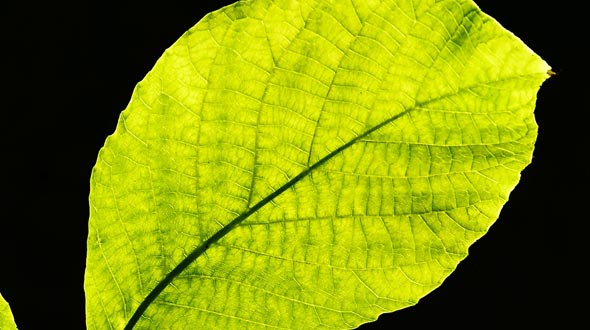
Simply put, trees grow up, trees grow out, and trees grow down. In one form or another, trees are always growing throughout their lifecycle, and do so until their death.
Knowing how they grow can improve your landscaping and gardening practices. Our team at Todd’s Marietta Tree Services constructed practical information below about tree growth and will dispel some common myths.
Do Trees Grow from the Bottom Up?
Yes. Trees do grow from the bottom up in the sense that the roots are transporting the “growth” building blocks up the trunk, through the limbs, and to the extremities of the tree.
However, the answer is NO when considering that tree growth occurs from its extremities. Consider the following:
Root Growth – Roots grow outward and down from their tips (similar to how limbs and branches grow longer). As roots grow and age, they thicken (much like the trunk does).

The roots of a tree are able to spread out and grow far beyond the tree’s dripline (the outer edges of the canopy).
Root activities almost exclusively support the growth of a tree. Four primary functions of tree roots are:
- To seek out sources of water and nutrients.
- To store glucose in the colder months (when growth is all but halted).
- To participate in the underground ecosystem through mycorrhizal associations or root grafting.
- To anchor the tree to the ground.
Trunk Growth – The trunk doesn’t stretch or grow upward. It does thicken though, and it adds two rings as each year passes. One light ring during the growth period and one dark ring as it slows down for winter or dormancy.
When looking at a cross-section of a cut down tree, you can tell how old the tree was when it died by counting one light and one dark ring for each year from the outside inward.

A common misconception is that tree trunks stretch upward as they get taller, when in fact they do not. If you were to pin a medal on the trunk at exactly five feet up from the root flare, it would still be exactly five feet up from the root flare fifty years or one hundred years later.
Branch and Limb – Growth in length happens within meristem tissues located at the tips of branches, stems, and twigs. These specialized tissues facilitate the upward growth of the tree, as well as the expansion of the tree’s canopy.

Branches and limbs grow in diameter through the vascular cambium within the bark. Very similar to how a trunk grows in diameter.
Do Trees Grow All Year?
While different species of trees will follow slightly different growth patterns, the answer is yes. Trees are continuously growing throughout the year.
Springtime – Foliage, limbs, and branches grow at high speeds in the spring.

Summertime – This is when trunk and limb diameter growth takes place.
Fall and Wintertime – As the trunk, branches, limbs, and foliage stop growing, the roots continue to expand outward and down throughout the coldest months of the year.
How Do Trees Get Their Mass?
It’s principally carbon. Without carbon, trees could not exist. Every time you exhale, you are providing the building blocks for a tree’s mass. Carbon dioxide (captured from the air) and water (sent to the leaves by the roots) bond together within the leaves of a tree to form carbon molecules.
During photosynthesis, energy from sunlight is transformed into chemical energy and captured within the bonds of those carbon molecules.

Those carbon molecules along with hydrogen and oxygen comprise the tree’s food source known as glucose. Each glucose molecule contains six oxygen atoms, six carbon atoms, and twelve hydrogen atoms.
Once a tree has satisfied the activities which keep it alive (cellular respiration), whatever carbon molecules (glucose) are left over are used in the growth process, adding to its mass.
Carbon, oxygen, hydrogen, nitrogen, sulfur, and phosphorus together comprise nearly all of a tree’s mass.
Tree Growth, Sunlight, Balance, and Longevity
While there are many facets that comprise a tree’s mechanisms, it is sunlight that is the driving force behind it all. Throughout the entire lifespan of a tree, it will depend on the sun for energy to grow and thrive.

Tree growth is symmetrical by nature. Throughout the life of a tree, its growth is consistently seeking balance. Trees will not grow beyond their capacity to support themselves. When stressed they will shed leaves, flowers, fruit and even drop entire branches.
Speaking of thriving, the lifespan of a tree depends primarily on its species and the environment it is growing in. While some palms live to about sixty years old, some pine species make it to well over five thousand years old. And there is increasing evidence that an ancient clonal grove of aspen trees called “Pando” is upwards of eighty thousand years old.
Sources:
https://projects.ncsu.edu/project/treesofstrength/treefact.htm
http://www.dof.virginia.gov/infopubs/_forest-facts/FF-How-A-Tree-Grows_pub.pdf
https://askabiologist.asu.edu/questions/what-oldest-living-thing-earth
https://plus.google.com/+Toddsmariettatreeservices
Todd’s Marietta Tree Services
(678) 505-0266

No comments:
Post a Comment